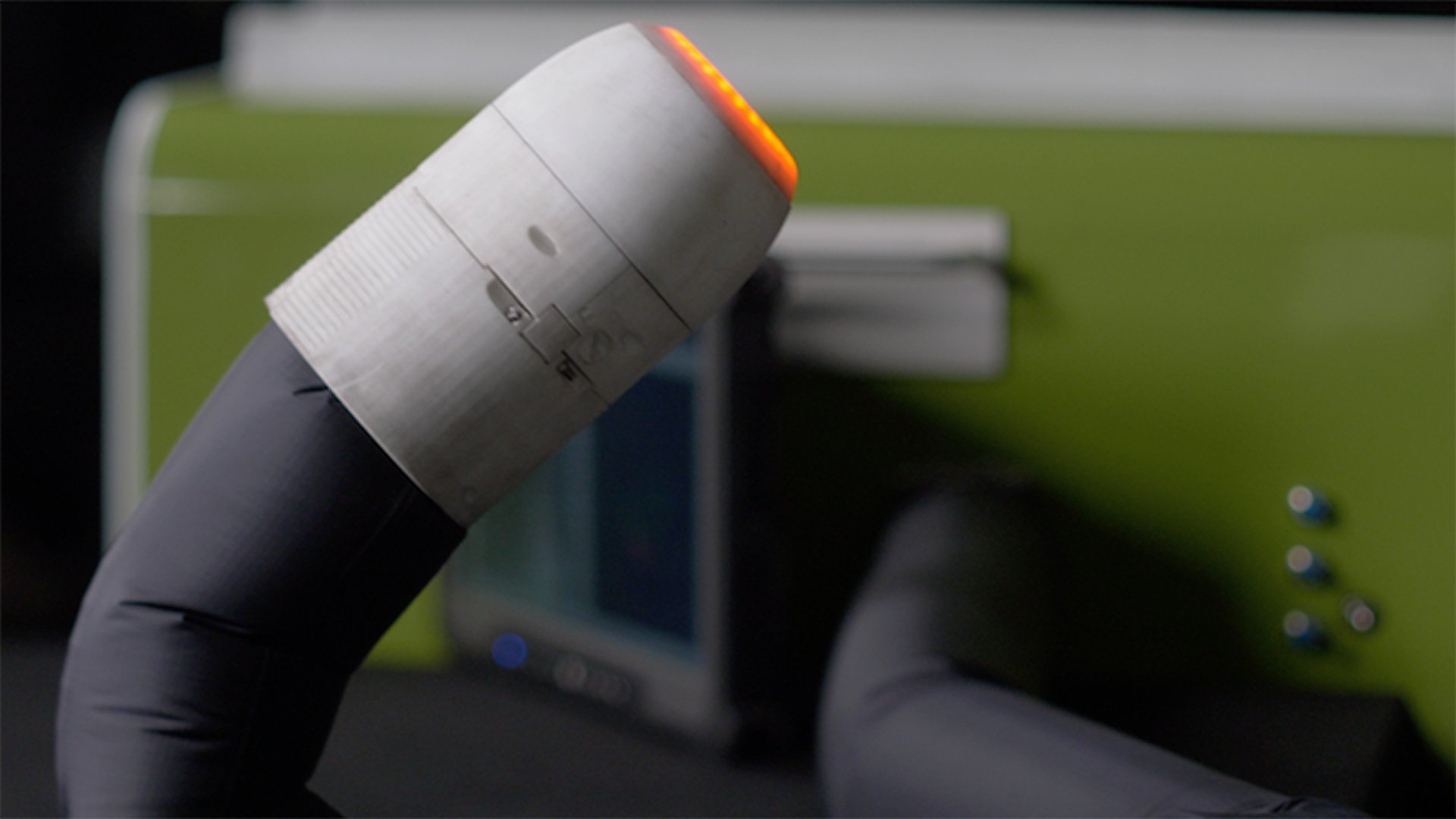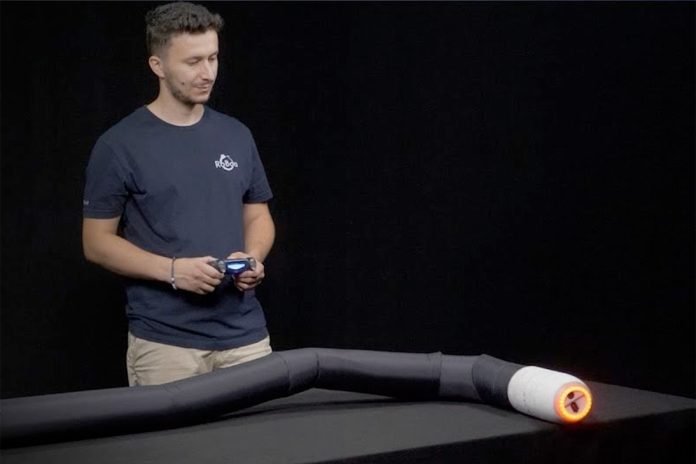Engineers at ETH Zurich’s Autonomous Systems Lab have developed RoBoa, an innovative, snake-like robot designed to operate in the tightest, most inaccessible spaces. With its ability to maneuver through complex paths, this robot can reach areas that are beyond the reach of traditional tools, making it particularly useful in inspection and search-and-rescue operations. RoBoa’s soft, pneumatic design ensures it can safely work in sensitive environments, even those with explosive risks, providing a flexible, non-damaging solution for various critical applications.
Unique design and locomotion capabilities
RoBoa’s movement relies on a unique growth-based locomotion principle, allowing it to “grow” forward by extending its length, a method that enables it to navigate narrow and complex paths efficiently. This current model can extend up to 20 meters, but the technology promises a potential reach of 100 meters in the future. With a variable diameter of 5 to 10 centimeters, RoBoa can enter spaces too tight for humans, drones, or conventional robots, without damaging delicate surfaces.
The robot’s soft construction is particularly beneficial for tasks in close proximity to humans or in environments where avoiding surface damage is essential. The pneumatic operation further enhances its suitability for hazardous areas, such as those with explosive materials, as it prevents the risk of sparking.
Precision maneuvering with 3D steering
RoBoa’s design includes a modular actuator system that allows for 3D steering in all directions, giving it the flexibility needed to navigate various obstacles. This high degree of control ensures that RoBoa can reach locations other robots simply cannot access. The combination of its growing movement style and 3D maneuverability makes it adaptable to winding paths and slippery or rough surfaces, making it ideal for environments like pipes, sewers, and disaster zones.

Advanced sensory and communication features
Equipped with multiple sensor configurations, RoBoa can monitor and map its surroundings in real-time. It includes cameras and time-of-flight sensors that provide visual and spatial data, making it suitable for detailed inspections in complex environments. Additionally, RoBoa is outfitted with a microphone and speaker, allowing rescuers to communicate with potential victims in emergency scenarios. This communication feature is invaluable in situations where RoBoa is deployed to locate trapped individuals, providing both a lifeline and a means of immediate interaction.
The robot also carries a supply line for liquids, enabling it to transport water, food, medicine, or cleaning agents directly to the front. This functionality enhances its utility in search-and-rescue missions, where it can deliver essential supplies to victims until they are rescued.
Simplified operator interface
RoBoa’s control interface is designed for ease of use, enabling operators to steer the robot, monitor its environment, and collect data in real-time. This streamlined interface minimizes the training required to operate RoBoa, making it more accessible for use by rescue teams and industrial inspectors alike.
Key applications: From disaster relief to industrial inspection
RoBoa’s design is particularly suited for a variety of applications, including search and rescue, industrial inspection, sewer maintenance, and exploratory missions.

Search and rescue: In disaster scenarios, such as earthquakes, RoBoa can be used to locate and communicate with victims trapped under debris. The Swiss Rescue Troops have already integrated RoBoa into their training exercises, leveraging its ability to maneuver through rubble and deliver supplies to victims while rescuers work to clear pathways.
Industrial inspection: In industrial environments, RoBoa offers an efficient alternative for inspecting process pipes, a task that typically requires equipment to be dismantled or emptied. Traditional inspection tools are often too rigid to navigate the tight curves and intersections within pipes, which can lead to costly downtimes. In contrast, RoBoa’s soft design and small diameter allow it to perform inspections without halting production, enhancing both productivity and safety in sectors such as water, food, pharmaceuticals, and petrochemicals.
Sewer maintenance: RoBoa’s active locomotion and precise steering make it ideal for sewer inspections, where it can travel further into networks than conventional tools. In addition to visual inspections, RoBoa can conduct basic maintenance tasks, increasing the efficiency of sewer system management.
Exploration: Beyond industrial and rescue applications, RoBoa is also useful for exploration purposes, such as navigating caves, tunnels, and other hard-to-access areas. With its 3D vision and mapping capabilities, it collects valuable data on these environments, which can be used for research, safety assessments, and documentation.
Future prospects
RoBoa was initially developed as part of a student project at ETH Zurich and has since progressed toward market readiness with the support of a Pioneer Fellowship. Although pricing details are yet to be finalized, RoBoa’s potential impact across various industries is clear. By combining flexibility, safety, and ease of operation, RoBoa presents a versatile solution for navigating the most challenging environments where traditional tools fall short.
Source: ETH Zurich



